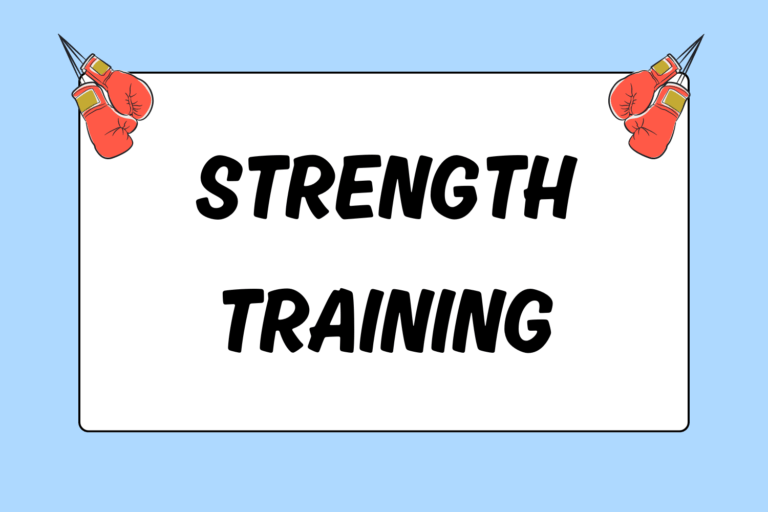It’s hard to land accurate, powerful shots when your opponent uses skillful defensive techniques. You also may be wary of coming forward aggressively if your opponent continues to land punches due to your lack of defense. Skillful boxers deliver accurate blows, while also avoiding incoming punches.
This guide discusses basic defensive techniques in boxing.
Defensive Guard
It’s difficult to completely guard yourself without any movement, but some measures can be taken to limit possible openings on your body and head. An effective guard begins with a solid stance:
- Your feet should be shoulder-width apart. Imagine a line on the floor running perpendicular to the center of your body. You should have one foot on each side of that line.
- Stand on the balls of your feet to enable quick movement.
- Turn your feet and torso slightly inward to limit exposure of your abdominal area.
- Tuck your chin to your front shoulder to limit the effect of punches landed on your head.
- Tuck your elbows to your body. Tucked elbows allow for better body protection, tighter punches, and decreased arm exertion.
- Most right-handed boxers use an orthodox stance. This requires your left foot to be ahead of your right foot. In this stance, the right hand is typically placed directly next to your right cheek. The left hand usually stays next to your left cheek or a few inches in front of the face.
- Most left-handed boxers use a southpaw stance. This requires your right foot to be ahead of your left foot. Southpaws should apply the same technique as orthodox boxers, but with opposite hands.
Your stance changes slightly depending on the distance between you and your opponent. It’s acceptable for your lead hand to be further out in front of your face when you’re out of your opponent’s reach. This position requires you to bring your lead elbow slightly off your torso. When you find yourself within close range to the opponent, though, keep your hands tight to your head and your elbows close to your body.
Head Movement
Head movement forces your opponent to throw punches at a moving target. As you tire throughout training and sparring sessions, your top priorities should be to keep your hands up, chin tucked, and head moving at all times.
Slipping
Slipping prevents jabs and crosses, known as straight punches, from landing on your head. Since the jab is the most frequently thrown punch in boxing, constant slipping is crucial to a skillful defensive game.
Slipping requires you to perform several movements simultaneously:
- Move your head slightly to the left or right.
- Bend slightly at the waist.
- Rotate your torso and shoulder.
The rotation of the torso and lead shoulder is slight when slipping to the right (orthodox boxers). When slipping to the right, bending forward at the waist is more important. When slipping to the left, however, the rotation of the torso and rear shoulder is more pronounced. The rear heel moves upward and outward when slipping to the left, as if you are throwing a right cross. The rear shoulder moves forward so that the torso is squared to the opponent and your head is to the left of the incoming punch. At all times your hands should be tight to your face.

Effective Contact
Surprisingly, smart defenders often allow punches to land on their hands, shoulders, or elbows. You may not be able to avoid a punch completely, but by applying the techniques below you can prevent your opponent from landing blows to the desired target on your head or body.
Parrying
Parrying refers to deflecting an incoming punch. You can parry by tapping the wrist of the opposing fighter as he extends the punch toward your face. Prior to contact, tap the side of the opposing boxer’s glove. Do no swat at the glove or extend your hand out too much. Keep your hands in tight. It’s astoundingly easy to send an incoming punch in another direction by tapping the wrist of the opposing boxer. A simple tap should keep you balanced, whereas a swat temporarily leaves you unstable.
Blocking
The term “blocking” is used to refer to several different defensive techniques. The most common form of blocking occurs when you catch an incoming punch with your rear hand. It’s almost like catching a baseball in a mitt. As an incoming punch moves toward your face:
- Move your rear hand towards the center of your face.
- Turn your glove so that your palm faces your opponent.
- Keep your elbow tight to your body.
- Focus your eyes on the opponent by looking over your glove.
- Rock back slightly as the punch makes contact with your glove.
Uppercuts can be blocked in a similar manner. Instead of turning your hand towards your opponent’s face, open your glove towards the ground to catch the incoming punch. Uppercuts are usually blocked with the same hand as the incoming uppercut. This idea applies to both orthodox and southpaw fighters. For example, if your opponent throws a left uppercut, you block the punch with your left hand. You are susceptible to a second power punch when blocking uppercuts, so keep your hands tight even when blocking, and quickly return your hand to a position close to your head.
Another common form of blocking occurs when your hand stays tight to the side your face and acts as a barrier between your head and an incoming hook. An accurate hook can change a fight, so make sure your hands are in position and ready to block.
Lastly, blocking is a great way to dodge body shots. Use your arms and elbows to deflect body shots from landing cleanly. Coil your upper body by bending your knees and dropping your elbows to a lower position.
Faces of Boxing: Pernell Whitaker
Height: 5 feet, 6 inches
Nickname: Sweet Pea
Stance: Southpaw
Record: 46-4-1
Getting to know Whitaker: Pernell Whitaker won a gold medal in the 1984 Olympics as well as world championships in four separate professional weight divisions. He was named the 1989 Ring Magazine Fighter of the Year. Whitaker will go down in history as one of the greatest southpaws of all time not because of his punching power, but because of his remarkable defensive prowess. He appeared to be untouchable in the ring and applied fantastic counterpunching skills that punished opponents. Many people consider him the best defensive boxer ever.
Legs are the Foundation
Many novice boxers easily tire due to sore shoulders and sore legs. Training your legs helps you become a quicker, stronger, and more effective boxer. Below are some defensive techniques that rely heavily on the legs.
Dipping, Bobbing, & Weaving
Simply bending your knees, called dipping, helps you avoid punches intended for your head. Bobbing and weaving usually follow a dip. Imagine a hook coming at your head. Ducking the punch is essentially dipping, bobbing, and weaving. The steps are as follows:
- Bend your legs.
- Move your head and upper body slightly forward and to the left or right.
- Pop back up.
The above description pertains to you remaining in a stationary position. You also can avoid getting hit as you move, though. For example, if you’re an orthodox boxer and want to move to the left:
- Dip.
- Push off your right foot and step with your left while remaining low.
- Drag your right foot forward so that you are once again in a comfortable stance.
- Pop back up.
Bobbing and weaving is a defensive technique that can make you a difficult target.
Foot Movement
Moving your feet is the simplest way to avoid getting hit. Moving forward, backward, and side-to-side, circumvents an aggressive boxer’s game plan. You can also plan your own attacks by moving in and out of range of an opponent.
In addition, use your front foot to pivot to either side. Pivoting allows you to move from directly in front of your opponent while still being in range to throw punches. A good pivot leaves you on the side of your opponent where he cannot hit you without also turning.
Hot Tip: Hands Held High
Remember to keep your hands at eye level at all times. It’s essential to keep your hand position close to your face even as you dip, bob, and weave. Although effective, such movements don’t always take you out of harm’s way. Your gloves are your last line of defense when all else fails.
Putting it all Together
When in doubt, remember: Hands up and chin down! Constantly keep your feet moving, and incorporate all the techniques discussed in this guide. By incorporating various techniques, you leave the opponent guessing. Ultimately, successful defense leads to successful offense.
As you gain experience, throw punches after each defensive maneuver. The ability to counterpunch separates great boxers from the rest of the pack.





